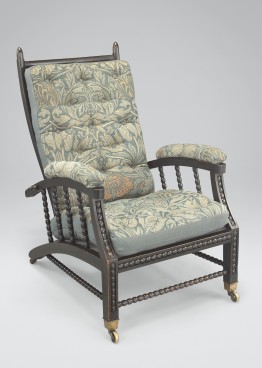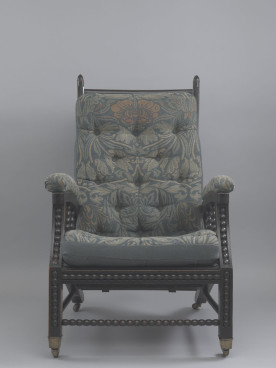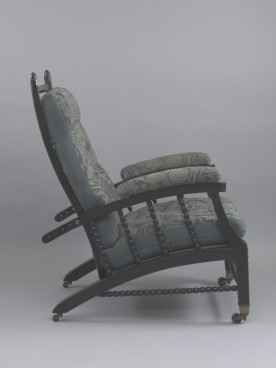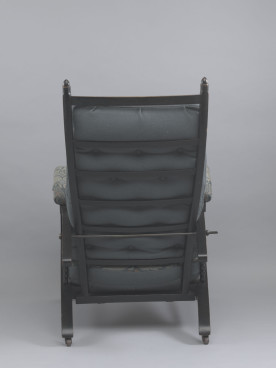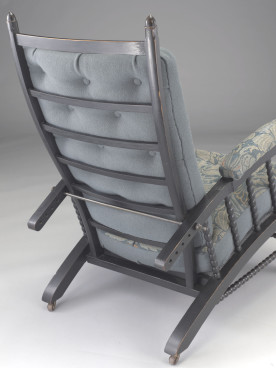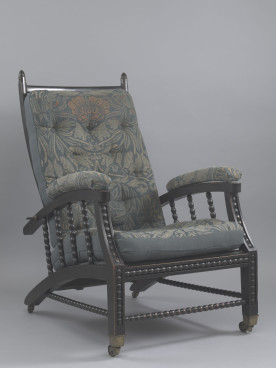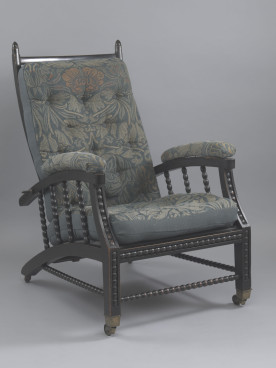Armchair, designed after c.1866
Ebonised beech, now with 19th- or early 20th-century woven wool
This chair was designed by Philip Webb, made by Morris & Co., London, and marketed as the Morris Adjustable-Back Chair. The upholstery fabric, Tulip and Rose, was designed by William Morris in 1876.
Adam Bowett Catalogue 14/08/2012
Description
An ebonized wood easy chair with ball-turned frame, circa 1865. It has a loose cushion to the hinged ladder back; the back can be adjusted by means of a metal rod which passes behind the back and is housed in holes drilled in the rear extensions of the two upper side rails; the two down-curved sides have upholstered arm pads and ball-turned spindle supports flanking the seat which has a loose squab supported on horizontal slats; the lower seat rails curve back and down to become the back feet; at the front they join to front legs of square section with ball turned decoration, with brass socket castors to the front feet and plain castors to the rear.
Dimensions
H: 38 ½ ” (98cm) Seat height: 16 ” (41 cm) W: 25 ½ ” ( 65 cm) D: 30 ½ ” (78cm)
Designer/Maker
Morris & Co., Philip S. Webb
Materials
Ebonised beech and other woods, brass and various upholstery materials
Construction
The back is constructed as a separate unit, comprising two vertical posts joined by narrow horizontal slats and tenoned into a base rail which is hinged to the back rail of the seat frame. Each side of the chair is formed of two parallel curving horizontal members with bobbin spindles filling the gap between. At the front the upper piece which forms the arm is tenoned on to the top of the front leg and the lower piece forming the seat rail is tenoned into the front leg. The sides are linked by horizontal rails tenoned into the front legs and to the lower side rails respectively and support to the seat is given by three narrow cross rails. There are ball-turned stretchers to the front and sides. The back is adjusted by means of a brass rod which passes through holes in the back portion of each upper side rail. The arms pads are screwed from beneath and the back and seat cushions are loose.
Condition
Condition is good. No breaks or obvious damage. Ebonised surface appears to be largely original with wear to exposed edges and surfaces. Front castors probably original, back castors replaced. Upholstery is late 20th century, using 19th century woven wool Morris & Co fabric.
References
To come

